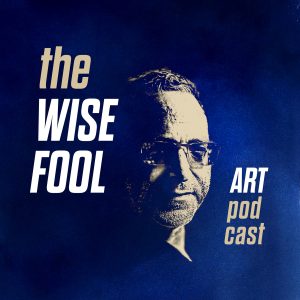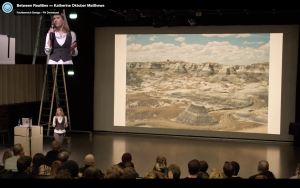"Art may not be as important as food or rent-money at some points in our lives, but if the only people making art are the people who can afford to spend time and money on it, we will have a very limited and warped view of the world."—Katherine Oktober Matthews (MaMagazine, 2023)

Interview for Toy Tokyo

This interview was published in Toy Tokyo (Kingyo Books, 2014) together with a selection of my images from the Harinezumi toy camera. The author is Manami Okazaki.
Can you tell us about your background as a photographer?
I started taking pictures pretty casually, as a way of documenting my travels. I never studied photography in a formal way, I just wanted to have photos of exceptional experiences. Eventually that ‘hobby’ grew into a bigger and bigger part of my life. It probably had to do with living abroad for the last 12 years – there have been a lot of travels and exceptional experiences to document. Over time, I gradually experimented with different formats and cameras as well as pushed myself to work with concepts or artistic goals in mind.
Where did you first come across a Harinezumi and what made you want to use it?
I was already into some of the older Russian toy cameras (in particular I love the Lubitel, but I’ve also shot with a Smena, Holga, Mini Holga), so I was following blogs and forums and Flickr groups, watching the developments coming out from this niche area of photography. For example, people were excited about LOMO revitalizing, The Impossible Project launching, and apps were coming out for mobile phone photography like the Toy Camera app, etc – there was a lot of buzz in the nostalgic cult of lo-fi photography. I read about the Harinezumi when it was announced and there was no question: I had to get one. It was a great marriage between the lo-fi spirit and the digital capabilities, and on top of everything, it could also take video. I happened to take a trip to Tokyo shortly after it was released in 2009 and scoured the city to find one, which turned out to be harder than I thought for such a gadget-oriented city. But I guess that shows just how much of an obscure interest it was! In the end, I stumbled upon one at the gift shop at the Museum of Photography and started shooting with it immediately.
Do you shoot a lot of movies as well?
I don’t shoot a lot of moving images and in fact have only really shot video with the Harinezumi, not with any of my other cameras, even my Canon 5D Mk II, which is known for its exceptional video quality. Ridiculous, isn’t it? But the Harinezumi is really perfect for street video in a way that other cameras aren’t – it’s incredibly small and unassuming, so people ignore it or don’t see it at all.
I did take a course on filmmaking once, which I really enjoyed, and perhaps I’ll explore it more in the future. There is limited time in a day though, so as an artist you have to make choices and compromises in order to focus and complete projects. It’s a good thing though, to be limited, because it forces you to be creative. For the present time, I’m concentrating on still images.
How does adding music (and another sense) to the work change how you experience the images?
Adding music can add cohesion to a series of images, offering them a common theme or emotional thread that leaves the viewer feeling like the images belong together. When a soundtrack is done well, it can even offer a narrative arc to a series of shots, building up tension or creating the sensation of transcendence, an escape from the mundane world. The multimedia aspect of filmmaking offers incredible opportunities to express yourself in multiple ways at one time, but of course that also means that you need to be in complete control over your intentions to be effective. With bad combinations, or even bad editing of good combinations, the effect can be ruined entirely. It’s easy to screw up, and because modern viewers have grown so sophisticated in terms of what they’ve seen and now come to expect, even ‘good’ work can seem mediocre. Good isn’t good enough anymore.
It’s a tricky thing, to determine the medium to best present a project. Some images really deserve to be seen on their own, without the distracting elements of sound or movement; they’re quietly beautiful on their own. For example, sometimes artists or even editors present photo series in a slideshow with some silly song in the background, but the two are disjointed, they were clearly not meant to be shown together and it does a disservice to the photos. I think sometimes it just comes from people’s fear of silence. They equate silence with boredom or angst and want to fill it as quickly as possible. As a viewer, I think it’s the same thing as having a conversation with a talkative person: you know it’s all nonsense.
What are 5 adjectives you would use to describe the atmosphere of the images produced by a harinezumi?
Sunburned, candied, nostalgic, mysterious, soulful
I’ve seen your work focusing on places such as Amsterdam and Texas, where you document a subjective experience, places that represent “home” to you. How did being in Tokyo as a tourist change the way you worked?
The topic of ‘home’ has been a common theme to my work over the last several years because I feel so at odds with it. I explore it because I don’t understand it. When I travel, it feels natural to take photos and make notes of things that are surprising or charming or beautiful or ugly. I brought my 35mm camera to Tokyo and was shooting with that, too. Tokyo is an incredible city for a tourist. There’s so much going on, so many people and city lights, so many different neighborhoods, so much modernity and also so much history and culture that is impossible to understand as an outsider. Maybe for the same reason, it’s very difficult to get a deep reading of the city, so that’s probably the biggest difference between the work I do when I’m travelling versus in a place where I’ve spent a lot of time. When I travel, I know I’m approaching the city and the people as an outsider, whereas when I photograph the places I live or know very well, I can play with the topic as an insider, even if I’m trying to see it with distance.
How do you feel that Londoners and Tokyo-ites relate to their cities, (the dynamic between the people and the environment.)
Megalopolises are funny places, and that’s why I tried to create a series from my work in Tokyo, London and New York. They’re so far away from each other, both geographically and culturally, and yet, the very nature of being unfathomably huge cities gives them strong similarities. These cities just heave with life, they’re bursting with people. And they all end up being ‘dog eat dog’ to some extent, very ambitious and cutthroat. When you work your way around the city as an outsider, you see the patterns, for example the rush hour traffic on the subways, the sad little trees built into the sidewalks for decoration, the new city trying to eat the old city alive. Tokyo tries harder than other megalopolises to hold onto its traditions, London acts like it’s just a small, polite village that got a bit big, and New York is a screaming beast, constantly trying to rip its own skin off to make room for the next thing.
Were there preconceived expectations before you went? what kind of things were you looking for?
When I go to a city for the first time, for example my first time in Tokyo, I might have preconceived ideas of how different it will be, but they usually disappear pretty quickly once I’m there. Reality is so much stranger than my imagination! When I start photographing, I’m usually looking for exactly those odd things that catch my eye, as well as the things that are so global that I can recognize them anywhere. There’s nothing local about loneliness, for example. Each city has its own personality though, so I try to be open to what a place has to offer. Sometimes it’s landscapes, sometimes it’s dilapidated buildings, sometimes it’s portraits. With Tokyo, I was drawn to the intense mixture of old and new architecture, as well as the people on the street or in public, because there are so many of them and for the most part, they’re so busy or tired that they don’t really notice if you’re photographing them.
Were you attracted to, or feel an affinity with the energy of Tokyo or did you find it alienating? like the London clip has eye contact and facial expressions whereas the Tokyo clip seems distant, asides from your friend.
The videos are somewhat circumstantial: in Tokyo, I travelled there alone, whereas in London, I went with two friends. I knew someone in Tokyo, but I was by myself for the most part. I often travel alone, which is great for moving around a place to take pictures, though depending on the friendliness of the city it can also be alienating. I found being in Tokyo incredibly invigorating because everything I saw was new or different, but it’s also true that I had very little interaction with locals (outside of being in a restaurant or shop). People are polite, but don’t really open up to conversation. I don’t know if that has to do with reacting to me as a tourist, for example a result of the language barrier, or whether it’s part of the culture and Japanese people would experience it the same way. Possibly both. Artistically, Tokyo was a great place to be for street photography because everyone would ignore me, but I think if I were to spend a prolonged period of time there, it could become very lonely.
In Tokyo-ga, Wim Wender says, “if I had been there without the camera, I would now be able to better remember.” Do you agree?
Memory is an impossible puzzle to solve. If I’ve forgotten something, how do I know that I don’t remember it? It’s just gone. Sometimes my friends tell me stories of things that I know never happened – but how can you prove whose memory is correct? Photographs don’t prove anything because they’re not facts, they’re narratives.
I am a deliberate photographer – absolutely not one of those people who walks around with a camera in front of my eyes all the time. If something magical is happening, I would rather experience it than photograph it, and will put my camera down when it detracts from the enjoyment of a moment. Do I remember those moments better without the photograph? I really don’t know. Somehow I doubt it.
Does it matter if I remember the photograph, rather than the moment? When I take a photograph, I’m documenting the moment exactly as I see it at that time, so how is that different than my memory? Sometimes I remember photographs I didn’t take. Is that a fake memory? I don’t treat memories as such precious objects, because I don’t trust them anyway. More than anything, I value the present moment, and sometimes that means photographing it and sometimes that means being completely present without a camera in my hand.
Why do you look at this low fi technology when the market is going towards high precision and improvements in image quality? Is something lost in this quest for perfection?
The problem with this quest for precision is that it’s inaccurate. Memories aren’t sharp, they’re blurry. So when we take sharp photos to remember things, it might make for a nice photo to put on your wall, but it’s sterile and in a way, I think always a little disappointing. I’ve tried many digital cameras over the years, but so far I always return to film cameras or to equipment that’s flawed or just lo-fi. When you use a camera for a long period of time, you learn to ‘see’ how the camera sees, or maybe it’s the other way around. But if a camera sees things perfectly clearly, how can you possibly relate to it? That’s what I’ve never understood. A camera has to have a personality that you find sympathetic.
Some people like precision, and I certainly don’t think there’s something wrong with people shooting in high quality digital. It’s perfect for product shots, for example, or fashion photography where they combine perfection with fantasy.
I think the love of lo-fi photography is something of a backlash against the way that modern precision equipment has enabled even amateur photographers to create technically good photographs. Artists want to distinguish themselves, so they use lo-fi equipment to prove their skill with the craft of photography, or maybe some of them prefer the retro aesthetics in a hipster way. The downside of this is that I see a lot of people using toy cameras to take pictures of their feet and they think that just because it’s a bit blurry with some light leaks, that makes it profound art. In the end, the medium doesn’t determine whether something is good or bad.
And why do you shoot with film? (like the Texas project) is there something in the process that appeals to you?
It’s as simple as this: I have yet to find a digital camera that consistently saw things the way I see them. If I’m shooting with color film, there’s a vibrancy there that’s just irreplaceable, inimitable. If I’m shooting with black and white, I can fall in love with the grain of the film, and digital noise will just break my heart. Plus, I can’t stand all the details that these high quality digital cameras catch. They see even more than I do, so when I look at the pictures I feel so disturbed. I can only think: that’s not what I saw at all.
I also prefer the delay of developing film. The instant feedback of digital cameras changes the way people shoot pictures. It’s great for learning about photography, but it drives me crazy to see people checking the back of their screen after every photo – photographers should learn how to trust themselves, trust their cameras. Working without being able to see the picture immediately forces you to visualize it in your head, and after a while you learn that trust. You know how to wait for the right moment, and have enough faith to click the shutter and move on.
See the tearsheets from the interview in Toy Tokyo.



